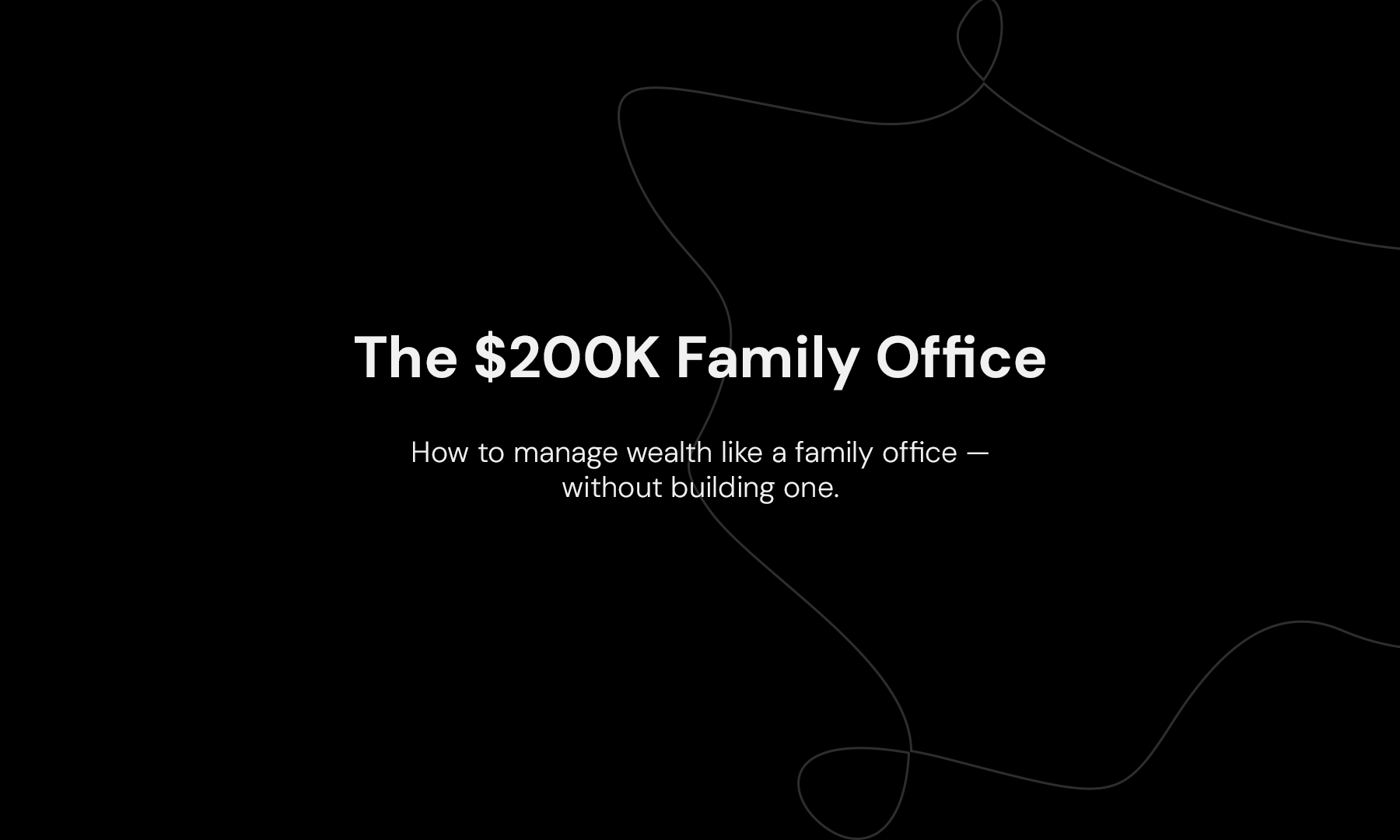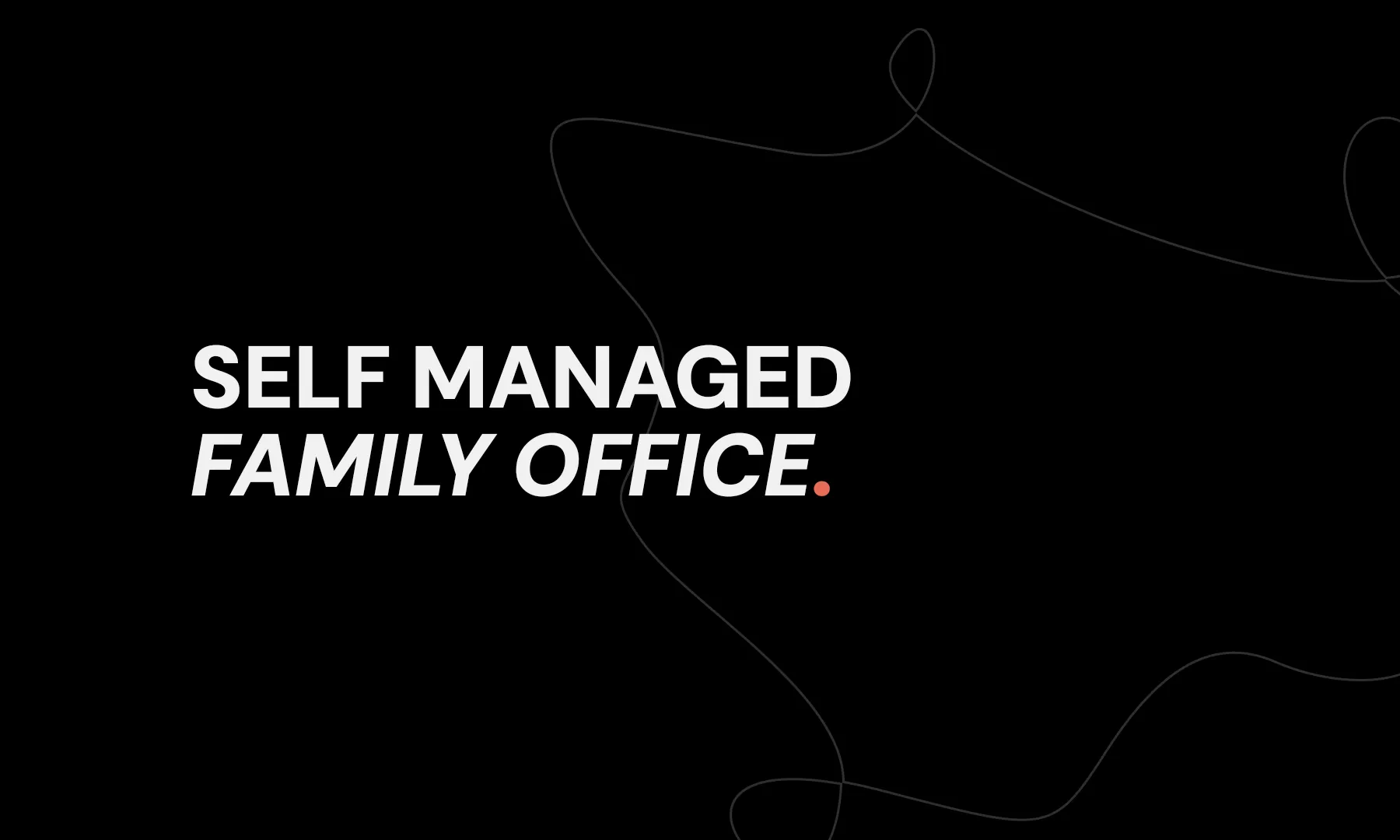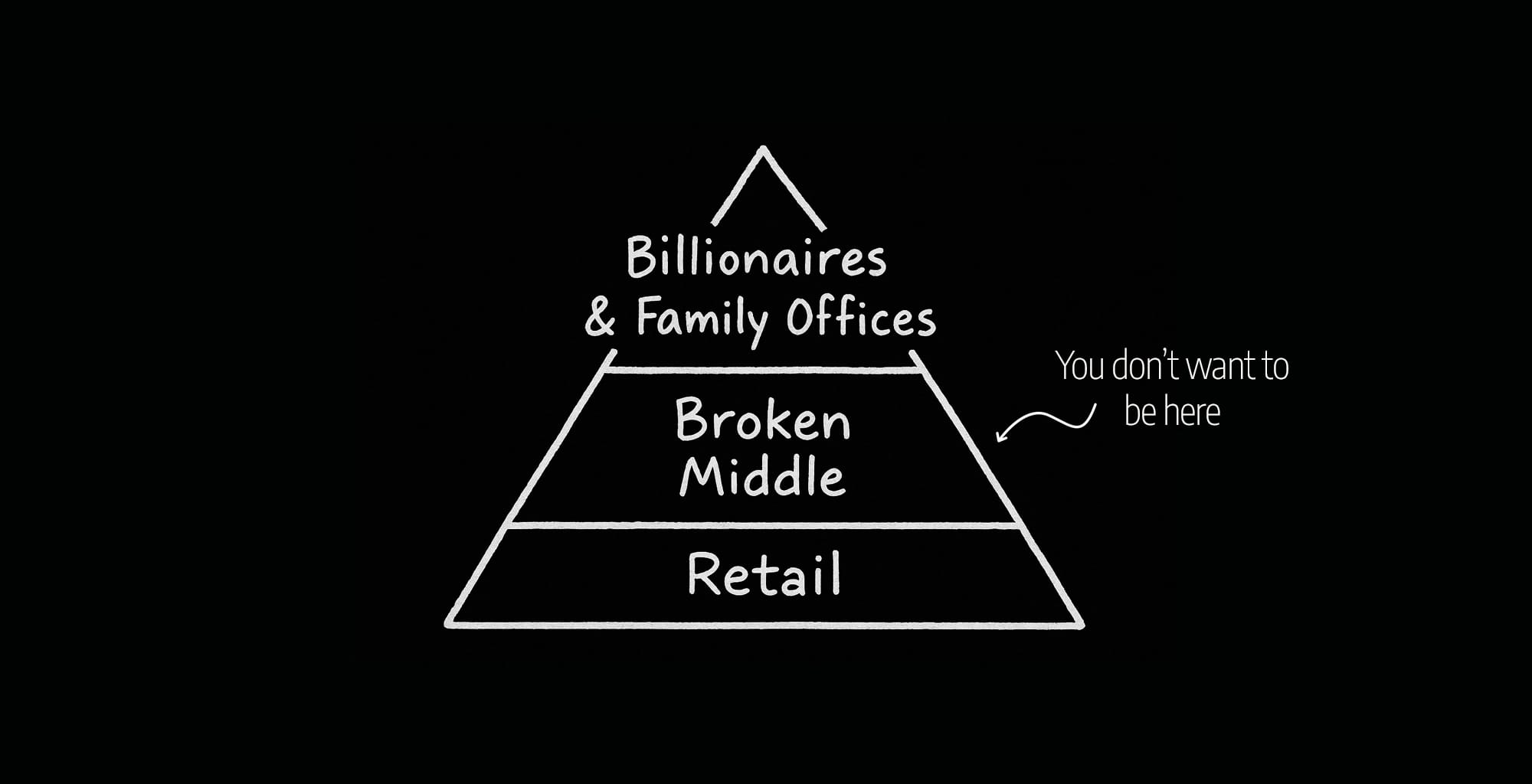A decade ago, building a family office meant hiring a small army.
CIO, controller, admin, legal, tax.
A physical office. A payroll north of $1M.
And the implicit message: that’s just what wealth requires.
But a quiet shift has been unfolding.
Modern wealth creators are asking a new question:
“What if we could manage all this—without the overhead?”
They’re not just asking. They’re doing it.
The result: a $200K/year outsourced family office that does what used to take a dozen people.
Here’s what that model looks like.
The $200K Family Office
| Function | Traditional Model | Lean Outsourced Model |
|---|---|---|
| CIO | $400K/year salary | $75K external CIO |
| Controller | $250K salary | $40K service provider |
| Reporting + Tech | $150K salary | $30K platform (FundFront, Mirador) |
| Office/Admin | $100K+ physical ops | $15K virtual support |
| Total | $1M–$5M/year | ~$200K/year |
You're not giving up control.
You're giving up the bloat.
How it works: Function by Function
1. Fractional CIO
Institutional guidance without the full-time hire.
Builds your strategy, selects managers, and tracks performance. No conflict, no product push.
Cost: $50K–$100K/year
Outcome: Pro-level investment oversight without the payroll.
2. Bill pay + bookkeeping
No controller needed.
Secure platforms manage payments, track flows, and deliver summaries.
Cost: $30K–$50K/year
Outcome: Clean books, no in-house headaches.
3. Reporting tech
Platforms like FundFront or Mirador aggregate accounts, track net worth, and visualize cash flows. Software + data management.
Cost: $20K–$40K/year
Outcome: A single source of truth — without IT staff.
4. Tax + legal on-demand
Top-tier CPAs, estate planners, and tax attorneys — hired only when needed.
Cost: ~$30K/year on average
Outcome: Best-in-class advice, flexibly deployed.
5. Virtual coordination
A part-time assistant keeps the wheels turning, calendar, approvals, service provider follow-up.
Cost: $10K–$20K/year
Outcome: Smooth ops with zero overhead.
Who this is for
The $200K family office works best if you’re:
- A founder or operator post-liquidity
- A first-gen wealth creator who hates bureaucracy
- A family scaling into UHNW territory, not ready to build a team
- Someone who wants visibility and control without friction
What to watch out for
This model works only if:
- Your providers are coordinated and aligned
- Decision-making authority stays with you
- There's full transparency on costs and performance
- You recalibrate annually as your life evolves
Not just cheaper but smarter
Wealth is more complex than ever:
Multiple entities. Asset classes. Jurisdictions.
But that doesn’t mean your structure should be.
The new playbook is clear:
Replace fixed headcount with flexible strategy.
Build infrastructure that fits your life, not someone else’s legacy model.
You don’t need 10 staff. You need 5 clear functions, delivered cleanly, outsourced smartly, and built around your preferences.
Ask yourself this
What am I still managing manually that I could replace with smarter systems and fractional strategy?
Your answer might be worth $800K in saved payroll, and even more in freedom.
Do you actually need a family office?
Before you hire anyone or restructure anything, it’s worth asking:
Am I even at the stage where a family office makes sense? And if so, what kind?
I built a tool to help you answer that in less than 5 minutes.
It walks you through your current structure, assets, and complexity, then shows you:
- Whether you’re ready for a family office
- What model fits you best (lean, traditional, or hybrid)
Try the Family Office Fit Tool →
(It’s free. Takes 5 minutes. Gives personalized results instantly.)
The $200K family office is no longer hypothetical.
It’s how first-gen, high-performance wealth creators are reclaiming their time without sacrificing control.
It’s not about doing less. It’s about doing only what matters.
That’s it for today.
Thanks for reading and enjoy your weekend.
Amin














Discussion